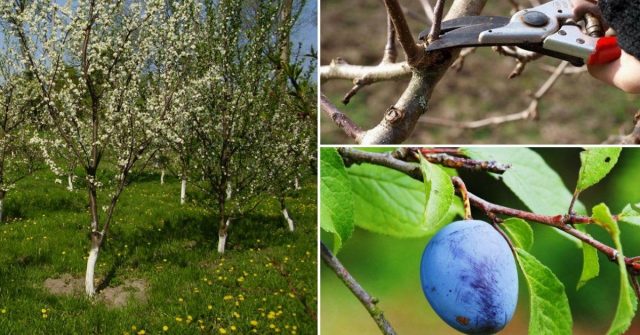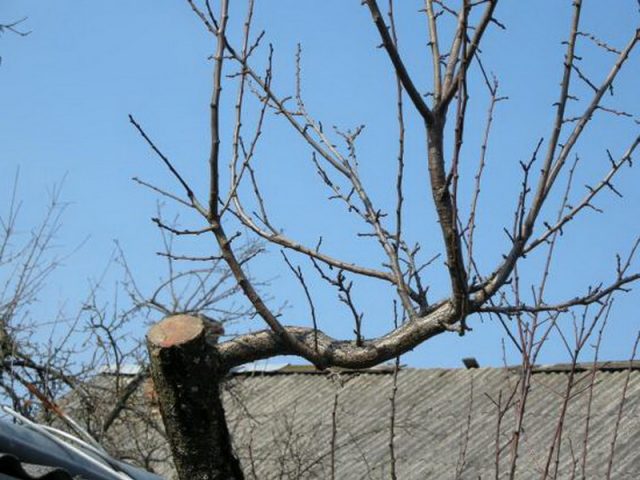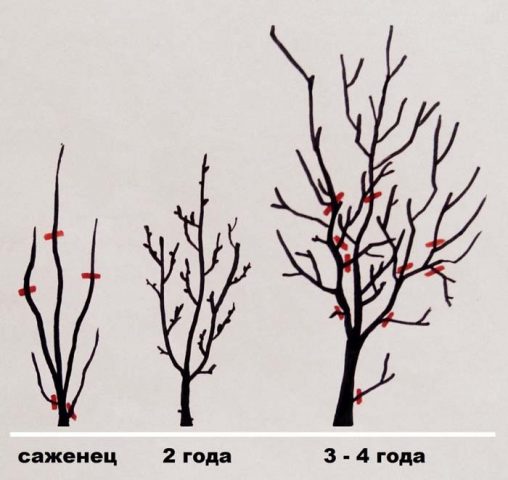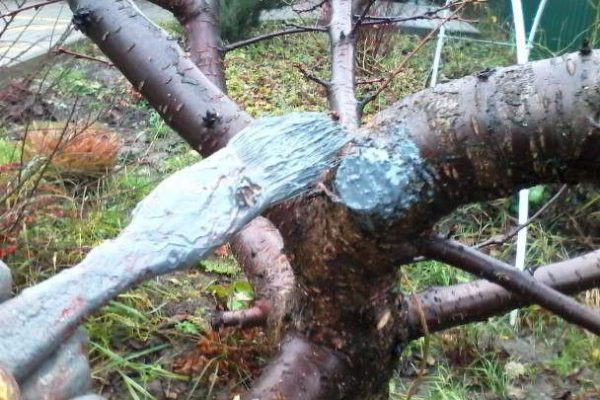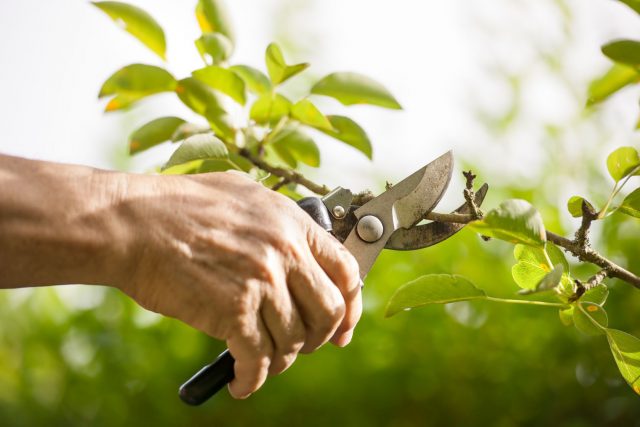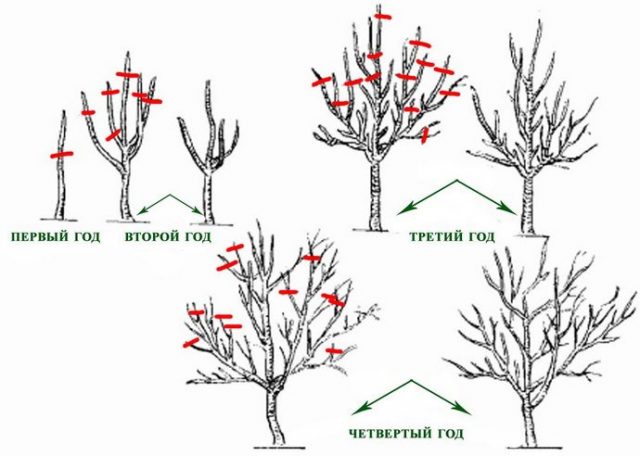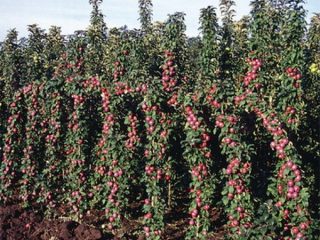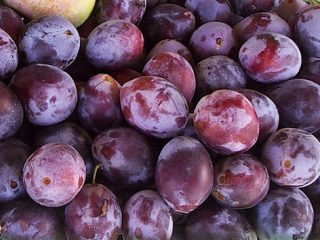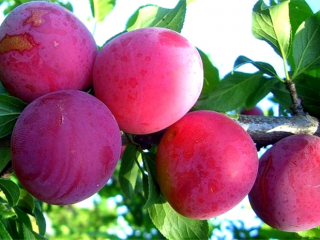Content
- 1 Do I need to form a plum
- 2 What are the types of pruning
- 3 How to properly prune plums
- 4 Plum pruning principles
- 5 How to prune plums in the spring: tips for beginners
- 6 Timing of pruning plums in spring
- 7 How to prune plums in spring
- 8 Plum formation according to the age of the trees
- 9 How to prune a yellow plum
- 10 Pruning a columnar plum
- 11 How to prune a bush plum
- 12 Pruning plums in summer
- 13 Plum care after pruning
- 14 Conclusion
Plum pruning is one of the important stages in the annual cycle of activities for the care of this crop. This procedure performs quite a few functions, and it is undesirable to ignore it. Properly carried out pruning will add life to the tree, relieve it of diseases and increase the quantity and quality of the fruit.
In addition, a well-groomed tree looks much more aesthetically pleasing.
Do I need to form a plum
The plum tree begins to form from the moment the seedling is planted. If this is not done, the crown will be strongly thickened, which will lead to stagnation of air and excess moisture inside it. Such conditions are a favorable environment for the development of diseases, especially fungal and putrefactive.
If a tree grows uncontrollably, it spends a lot of energy on growing and ripening unnecessary shoots. This significantly reduces fruiting, since the tree simply does not have the strength to give a good harvest. In addition, the central part of the tree is heavily shaded and does not receive enough sunlight. On a neglected tree, the fruits become smaller, and their number decreases, moreover, their ripening occurs mainly on the peripheral branches.
If you do not prune plums, gradually the space inside the crown will be filled with dry branches. They are formed as a result of freezing in winter or simply breaking from the wind or under the weight of the fruit. Such dead wood is a real dormitory for larvae of various pests, of which there are quite a few plums.
What are the types of pruning
Each of the existing types of pruning plum is carried out for a specific purpose. There are the following types of trimming:
- sanitary;
- thinning out;
- anti-aging;
- formative.
Each of the types has its own timing and frequency.
Sanitary pruning
This is a mandatory type of pruning, which must be carried out at least twice per season: in spring, before the buds swell, and in autumn, after the end of the leaf fall. Sanitary pruning is done to rid the tree of unnecessary trash, which is dry and broken branches.
All shoots infected with fungus or other diseases are cut out at the same time.
Plum thinning pruning
The name speaks for itself, since such pruning has the goal of ridding the crown of thickening. For this, all incorrectly growing shoots are cut out, as well as those that grow deep into the crown. Vertical shoots (tops) are also removed.
Rejuvenating plum pruning
Such pruning may be required for an adult plum tree if its fruiting begins to drop noticeably, and the annual growth has decreased to 10-15 cm.The essence of anti-aging pruning is the gradual replacement of all old wood with new one. To do this, cut out a part of the old branches of the crown (usually no more than ¼ part), instead growing young shoots and, as it were, form the tree anew.
After 4 seasons, the crown is completely renewed. This procedure can significantly extend the life of the plum tree and the period of its active fruiting.
Formative pruning of plum
Formative pruning is carried out in the first years of the tree's life and allows the young plum to be formed in one way or another. There are several types of crown, which is formed by pruning:
- sparse tiered;
- cupped;
- pyramidal.
The formative scheme for pruning plums in spring depends on the gardener and is chosen by him depending on climatic features, variety and personal preferences.
A video on how to form the crown of a plum in a young tree can be viewed at the link below.
How to properly prune plums
When pruning plums, gardeners use various techniques that allow pruning in one way or another. These techniques include the following:
- Thinning. Provides complete removal of a branch or part of it from a fork, while the length of the branch itself does not change.
- Shortening. Removing the top of a branch to a certain length.
Both the one and the other technique can be performed in different ways. These are:
- Cut into the ring. Applied when completely deleting a branch. At the same time, you should not leave too large hemp, make oblique or too long cuts.
- Kidney cut. It is used when forming the crown in order to set the direction for the growth of the shoot. The shoot is shortened at a 45 ° angle above a correctly oriented bud.
- Transfer to a side escape. It is done to change the direction of growth of a branch. A promising lateral shoot is selected, and the branch is cut 2 mm above the ring.
Plum pruning principles
Pruning is a rather demanding procedure, and if done incorrectly, it will harm the tree rather than help. It must be done in due time, otherwise the plant will recover for a long time. Slices must be done evenly and accurately, so only a high-quality sharp instrument should be used. It must be sterilized both before and after pruning.
After the procedure, it is imperative to treat all sections with a disinfectant, otherwise there is a high risk of infection. After processing, the places of the cuts must be covered with garden varnish. This will prevent the sap from leaking out and help the wound heal faster.
How to prune plums in the spring: tips for beginners
Before you start pruning plums, it is advisable to study this issue in theory. This will allow you to understand why this procedure is being done and how it affects the tree. Then you can move on to practice. The first time it is best to prune with someone from experienced gardeners with the appropriate skills.
You can use a garden pruner to remove unnecessary growth of small thickness. Larger branches are removed with a hacksaw. When cutting down large branches, you must first make a cut from the bottom. Otherwise, a sawn branch, breaking off under its own weight, can make a big bark seizure. Slices "for the kidney" and "for the lateral shoot" are made with a sharp garden knife.
Timing of pruning plums in spring
In order not to harm the tree and help it recover quickly, it is imperative to follow the recommended time frame.
When to prune plums in spring
The spring pruning procedure is carried out before the beginning of the growing season. You need to choose a time when the soil has already thawed, but the plant is still dormant. At this time, the movement of juices in it has not yet begun, and the kidneys have not swollen. In the southern regions, this time falls on the end of February - early March, in the middle lane a little later.
Is it possible to cut a flowering plum
The flowering period is the time of the greatest intensity of movement of sap in trees. Any pruning at this time can lead to an increased release of sap at the cut points, which will greatly weaken the tree and may even lead to its death.
How to prune plums in spring
The crown of an adult plum tree can be formed in several ways. In addition to the fact that a tree with a beautiful neat crown looks more aesthetically pleasing, it also makes it easier to work with it, as well as increases productivity, reduces morbidity and prolongs life.
A video on how to properly cut a plum in the spring is at the link below.
How to shape a plum into a bowl
A plum with a bowl-shaped crown is formed by limiting the growth of the central conductor at a low height. This allows you to transfer growth to strong lateral shoots, which, overgrowing, gradually form a bowl. This method has several advantages:
- Low height of the tree, you can work with it without special devices.
- Increased yield due to the clarified center.
How to cut plums in tiers
The sparse-tiered crown is one of the main ways of forming fruit trees, including plums. The essence of this method consists in the formation of several (usually three) fruiting tiers of branches, separated from each other. A crown of this type is formed within four years, in each of which the next, higher tier is laid.
The tree, the crown of which is formed in this way, has a central leader-shoot, which is cut only on a fully formed tree. It makes the whole structure strong and stable.
Pyramidal plum trim
Pruning a plum with a pyramidal crown is also done in several stages. During the first three years, pruning and shortening of the leader and skeletal branches is carried out, in subsequent years, corrective pruning is performed to maintain the desired shape. Pyramidal plums are not tall and are often planted as an ornamental tree.
Bush pruning of plums
The bushy form of cultivation is atypical for plums, however, it is also used by gardeners, especially in cold climates. The bush form is achieved by removing the central conductor and growing several equivalent shoots on a short stem.
How to prune a tall plum
If the plum is not properly formed, it can grow to a considerable height. In this case, it is better to lower the crown, this will improve the quality of the fruit and facilitate the work. You can reduce the crown in stages or immediately. If the plum is less than 10 years old, the central conductor can simply be cut off at a height of about 2.5 m. All shoots growing nearby are shortened to the same length.
Gradually reduce the crown of older trees, cutting off skeletal and semi-skeletal branches for a lateral shoot. By gradually removing the vertical shoots, the crown can be reduced to an acceptable size over several seasons.
Do I need to cut the lower branches of the plum
Young shoots often appear on the plum stem below the skeletal branches. When trimming, it must be removed by cutting into a ring. Gardeners have a rule: the trunk below the skeletal branches must be clean. And whitewashed.
How to trim tops
Tops are vertical shoots on which fruits are never formed. After pruning, they begin to form in excess and strongly thicken the crown. To prevent them from taking away strength from the tree, they can be cut throughout the season.
Using various stretch marks and weights, some tops are given a horizontal direction of growth, thus turning them into fruit branches.
Plum formation according to the age of the trees
Plum crown formation in one way or another begins in the first year after planting and continues for several years. The crown is usually fully formed by 4 years.
Pruning plum seedlings when planting in spring
When forming the crown in a sparse-tiered way, after planting, the seedling is cut off at a height of 60–80 cm. 3-4 buds should remain below the cut. After pruning, shoots will begin to grow from them, which will become skeletal branches of the lower tier. Pruning plums when planting in spring is the basis for competent tree formation for all subsequent years.
How to form a plum in the first year
In the first year after planting, no more pruning activities are carried out. The next spring, after planting, the formation of the lower tier begins and the middle one is laid. To do this, do the following:
- Choose 3-4 strong shoots growing in different directions from the trunk and located approximately at the same level. The rest of the shoots are cut “on the ring”.
- Small branches of the first tier, the length of which is less than 0.3 m, are left, all the rest are also cut out "on the ring".
- Selected 3-4 shoots are pruned at the same level, about half of the uppermost shoot.
- The central conductor is shortened so that its height is 0.15–0.2 m higher than the point where the shoots are cut.
Pruning 2 x Summer Plum
The following spring, pruning of the 2-year-old plum continues. At this time, the formation of the second tier of the plum ends and the third, the last, is laid. Approximately at a distance of 0.5–0.6 m from the lower tier, 2 or three promising shoots are selected, extending in different directions from the trunk. All activities that took place in the previous year are repeated. Branches growing deeper into the crown, competing shoots and tops are also removed.
Pruning young plums
The formation of the crown ends next spring. At a distance of 0.4–0.5 m from the second tier, the most powerful shoot is left, all steel ones, including the central conductor, are cut “into a ring”. Shoots of the lower and middle tier are pruned. After that, pruning the young plum is possible only for a sanitary and thinning purpose, removing the thickening of the crown and limiting its growth upward.
How to prune a mature plum tree
An adult fruiting plum is pruned several times per season. In the spring and in autumn they carry out sanitary pruningremoving dead, broken and diseased branches. At the same time, branches growing above the crown are transferred to the lateral shoot in order to limit the growth of the tree upward. Tops are also cut out, growing abnormally, rubbing against each other and directed deep into the crown of the branch.
How to prune an old plum
A sign of the need to rejuvenate an old plum is a decrease in yield, a decrease in the annual growth of shoots to 10-15 cm and a shift of fruiting to the upper part of the crown. For rejuvenation, the tree is gradually rid of old wood by sawing out skeletal branches. This procedure is carried out for 3-4 seasons. During this time, the tree will be completely overgrown with new shoots.
Trimming a running plum
If the tree hasn't been pruned for a long time, you shouldn't try to bring it back to normal in one go. First of all, you need to do an inspection and remove all dry, broken and diseased branches. After that, you can start thinning pruning. It is necessary to remove the top shoots growing deeper into the crown and rubbing against each other. The current year's gains are cut by a third of their size. These measures will significantly lighten the crown. After harvesting, it will be possible to assess the condition of the tree, in terms of fruiting, and outline measures for its rejuvenation for the next season.
How to prune a yellow plum
There are quite a few varieties of yellow plums. There are no nuances of its cultivation, and it is pruned in the same way as other varieties of plum.
Pruning a columnar plum
Columnar trees are gaining in popularity due to their small size and compact crown. They are also planted for decorative purposes. Columnar plum does not require crown formation, and only broken or dried branches have to be pruned.
Pruning can be purely decorative, it is carried out in order to preserve the shape of the crown.At the same time, part of the harvest is lost, but this is not important when growing a columnar plum for decorative purposes.
How to prune a bush plum
If the crown of the plum is formed by a bush, it must also be cut off. In addition to sanitary pruning, during which dry and diseased wood is removed, thinning is carried out, during which all shoots growing deeper into the bush are removed.
It is imperative to remove the root growth, of which quite a lot is formed at the plum. This must be done very carefully so as not to damage the roots located close to the surface. The shoots should be cut near the root by digging out the topsoil. If you cut it too high, the situation will worsen and the growth will become even larger.
Pruning plums in summer
Summer pruning has several benefits. At this time, all the disadvantages of the crown are clearly visible: dry and broken branches, unnoticed during spring pruning, places of thickening, growing tops, etc. And also shoots that have flaws in the bark, affected by diseases or fungus are clearly visible.
Pruning plums in summer for beginners - in the video at the link below.
Plum care after pruning
After trimming, all sections over 1 cm in diameter must be disinfected with a solution of 1% copper sulfate. This will prevent fungal spores from entering the wound. After that, the wounds are covered with garden varnish or painted over with oil paint on a natural basis. The cut branches must be collected and burned.
Conclusion
Correct and timely pruning of plums can not only increase productivity, but also significantly extend the life and period of active fruiting of the tree. However, you should not strive to carry it out by all means. If the deadline is missed, it is better to refuse pruning and cut the plum next spring, otherwise the consequences for the tree can be catastrophic.
